Explore an Ancient Cave City in Armenia
Residents lived in Old Khndzoresk up until the 1950s
In a rural corner of southeastern Armenia, livestock walk in and out of rooms carved into the cliffside, grazing among the ancient rock-hewn homes of Old Khndzoresk, a multi-level village built into the volcanic rocks. Archaeological evidence suggests habitation of the excavated caves goes back over a thousand years, ending only recently, in the 1950s. In the early 1900s, Old Khndzoresk was the largest village in eastern Armenia, housing about 8,300 residents in 1,800 homes. These homes had several rooms and were all stacked upon one another; one house’s roof was the yard of the one above. The village also had seven schools, four churches, three dyeworks, several leather workshops and about 27 other shops. Residents were known to have traveled to and from different spots in the village through a series of hidden tunnels or by using ropes to climb to higher levels.
The origin of the name is up for debate. Folklore has two accounts: “khndzor” means apples in Armenian, so the village was perhaps named for the various apple trees growing there; or the name might have origins in “khor dzor,” meaning "deep canyon"—because of the cliffs the town was built into. Although researchers aren't exactly sure when the cave village was first built, written records dating to the 13th century name it on a list of villages required to pay taxes to Tatev Monastery.
Aside from being a fascinating architectural sightseeing opportunity, Old Khndzoresk is a must for military history buffs. Mkhitar Sparapet—once a key leader of the rebellion during Armenia’s fight for liberation from Ottoman rule in the 1700s—is buried nearby. Villagers are said to have murdered him in 1730, fearing the Ottomans would target their village if he was found hiding there. His stone tomb can be found at a 17th-century hermitage near the bottom of the gorge, slightly south of the old village.
In 1958, Old Khndzoresk’s residents moved out, having built a new village higher up the canyon. The exact reason is under dispute: Some say an earthquake in the 1930s devastated the village and left the cave dwellings unsafe, leading to a gradual departure. Others suggest the residents were forced to move by Soviet leaders, who deemed the caves uncivilized and wanted to source the rock as building material. Whatever the case may be, the families built and moved into their new town, aptly called New Khndzoresk. Today a 525-foot-long swinging suspension bridge hangs about 200 feet above the river, linking the two villages. It opened in 2012, built by locals with local materials and can be accessed by a path that leads from a viewing platform.
From the bridge, visitors can see the several historic churches once frequented by villagers, as well as a fountain, “Nine Children,” named for a local legend: Once, during an attack on Khndzoresk, women and children were needed to fight alongside the men. A widowed mother, Sona, was killed in battle, leaving behind nine children. After the attack, Sona’s father Ohan built the fountain—installing a bowl that looks like a woman’s breast. He christened the fountain with a single prayer: “I beg you sacred fountain, let the water of the fountain turn into milk and protect my orphaned grandchildren.”
Explore the town's architecture, landscapes and legends in this 360-degree interactive map, created by 360 Great Armenia:
/https://tf-cmsv2-smithsonianmag-media.s3.amazonaws.com/accounts/headshot/JenniferBillock.png)
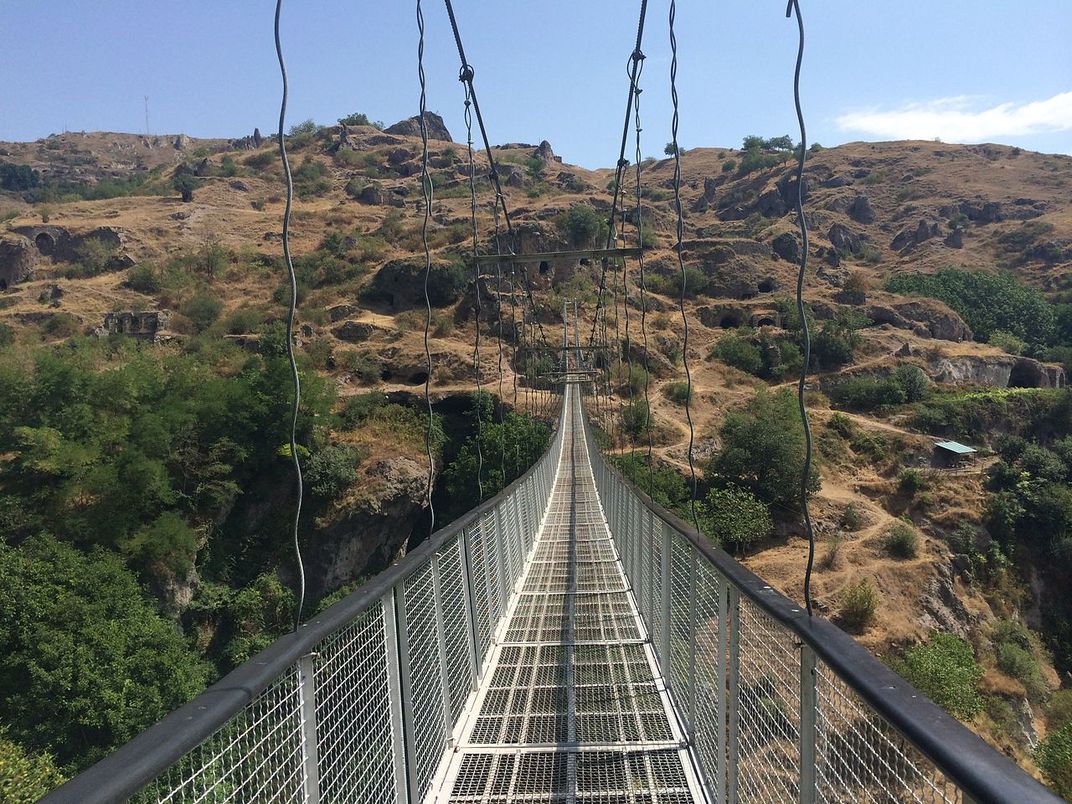
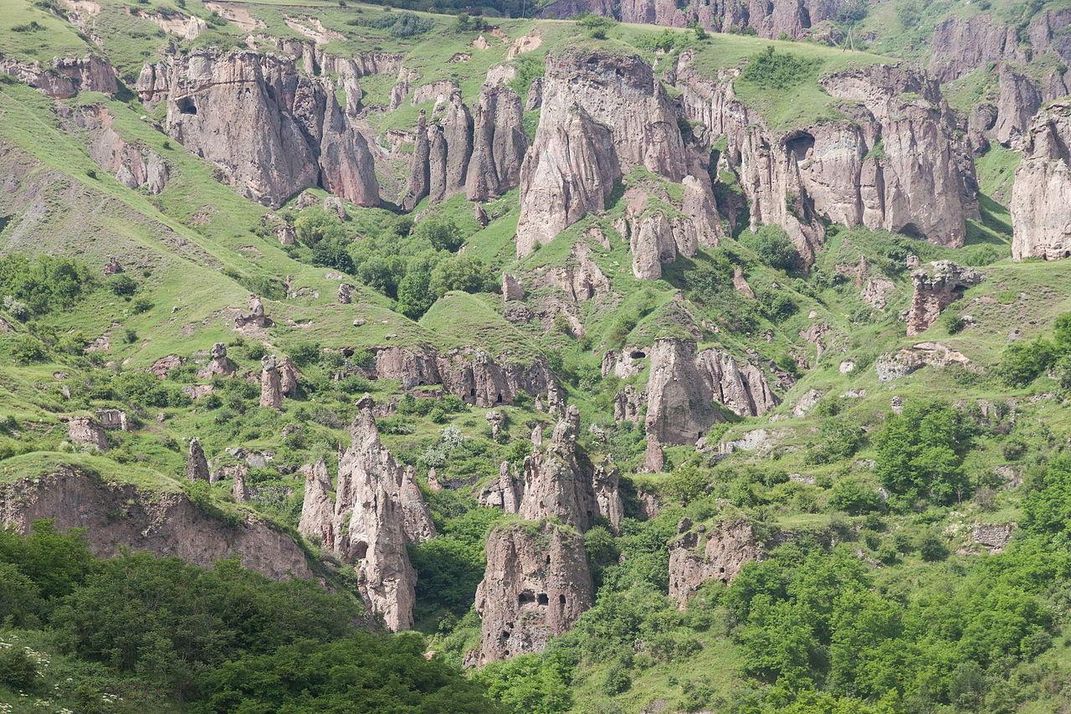
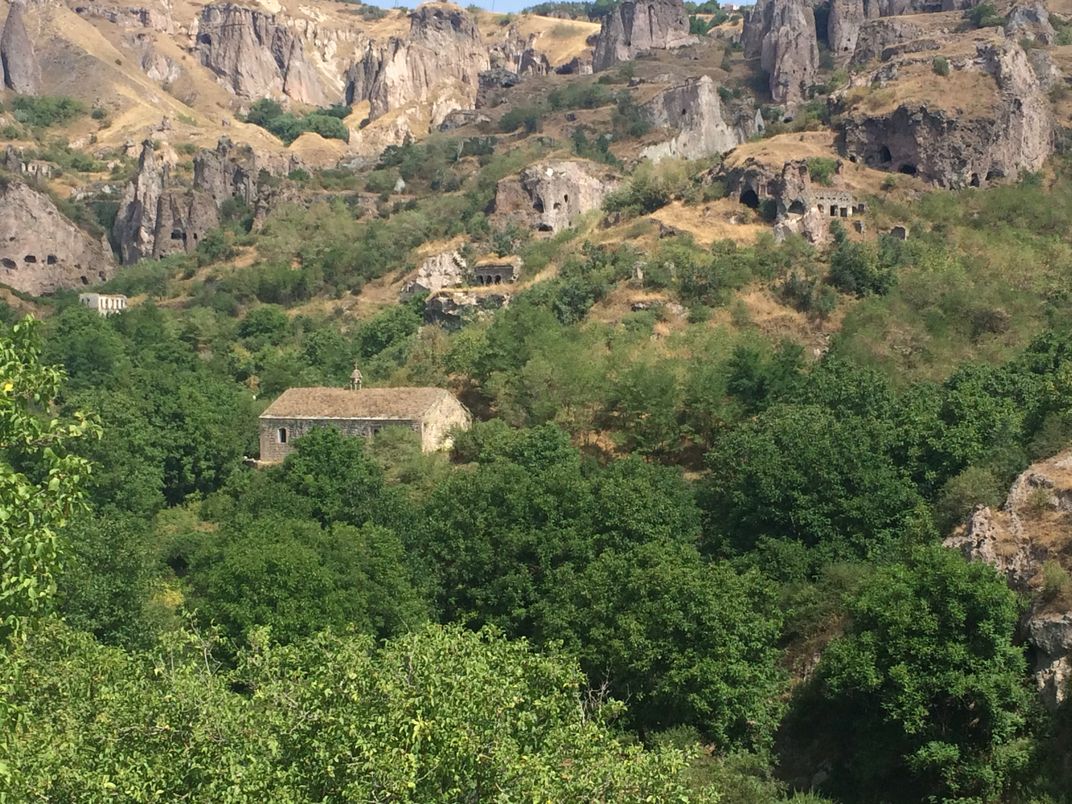
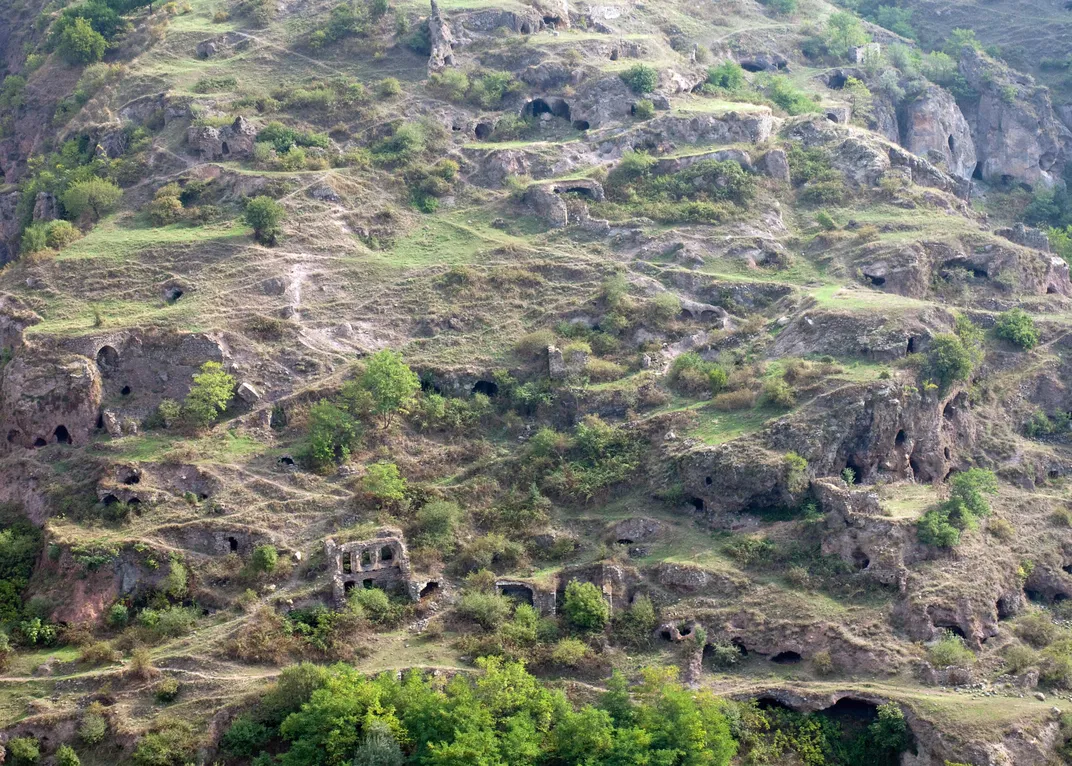
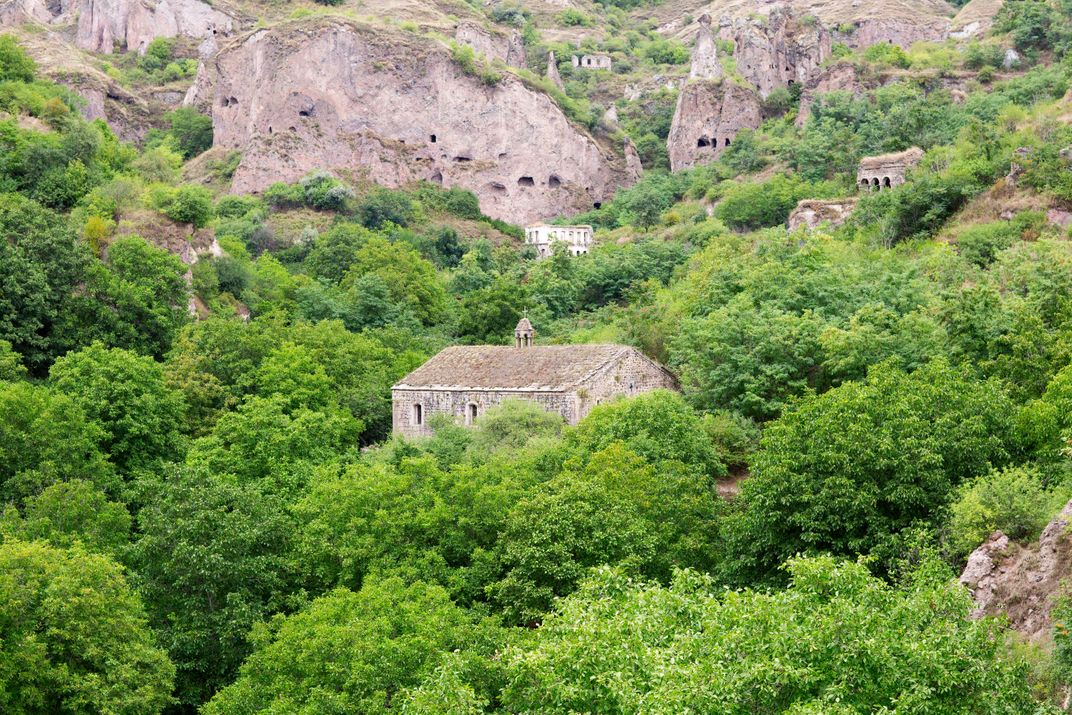
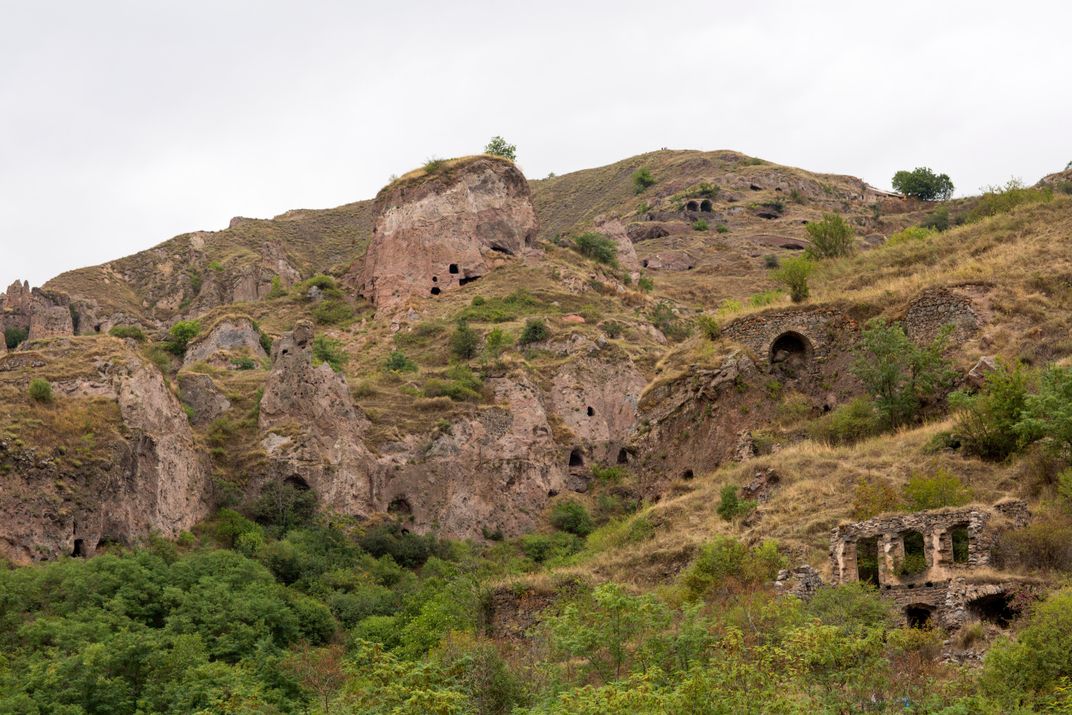
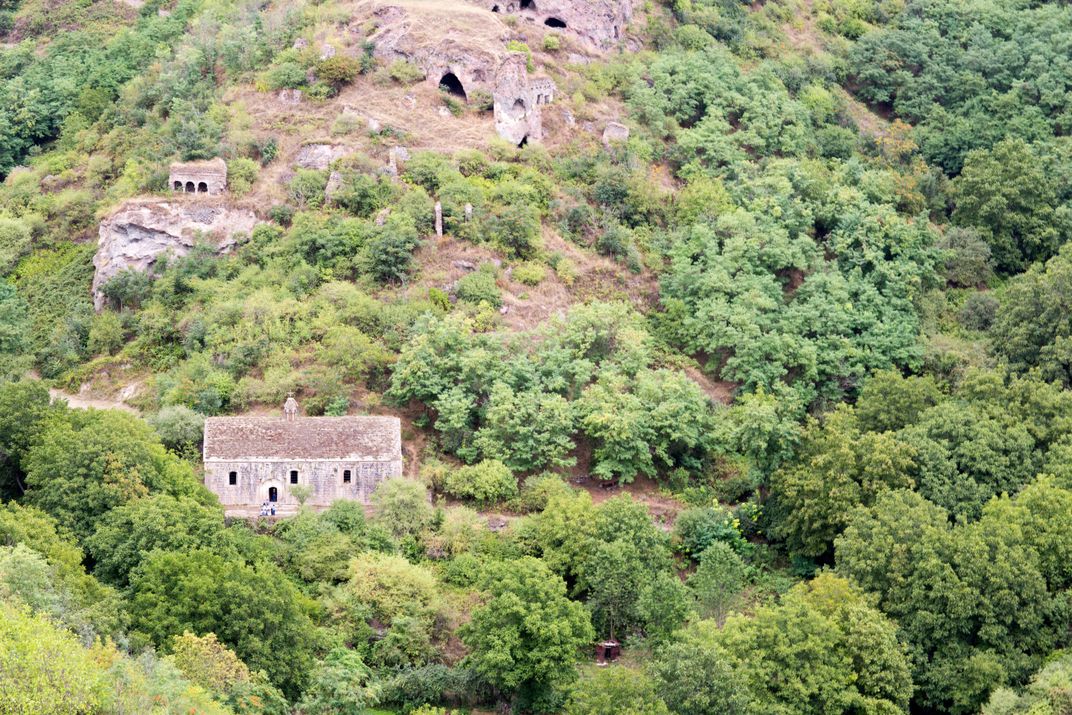
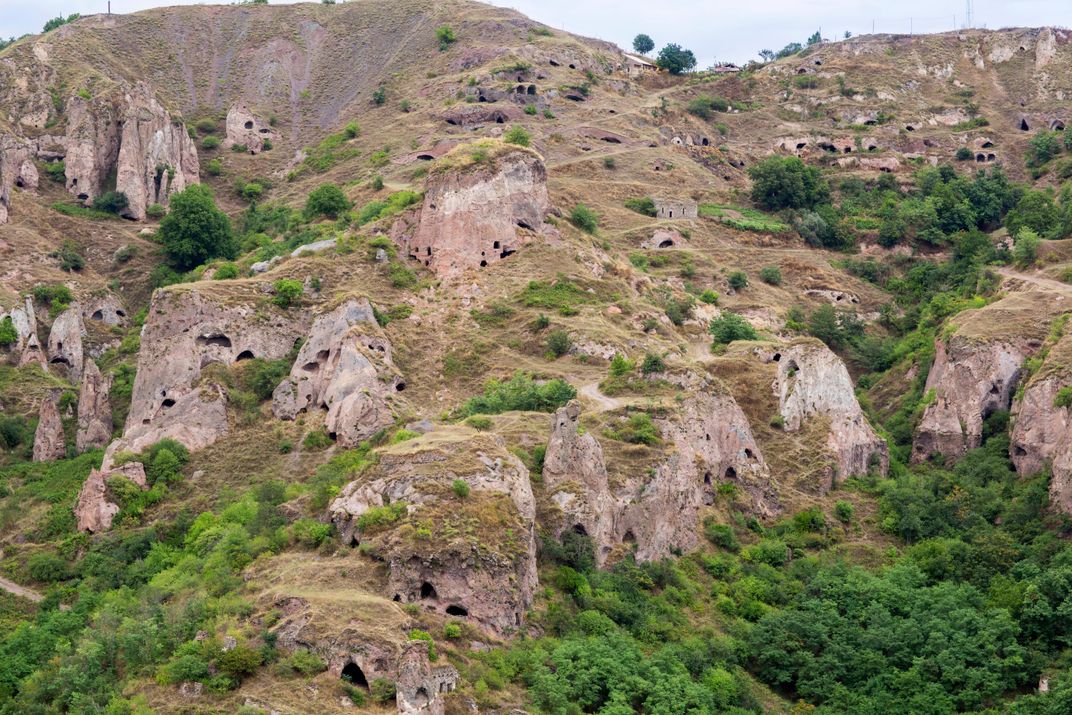
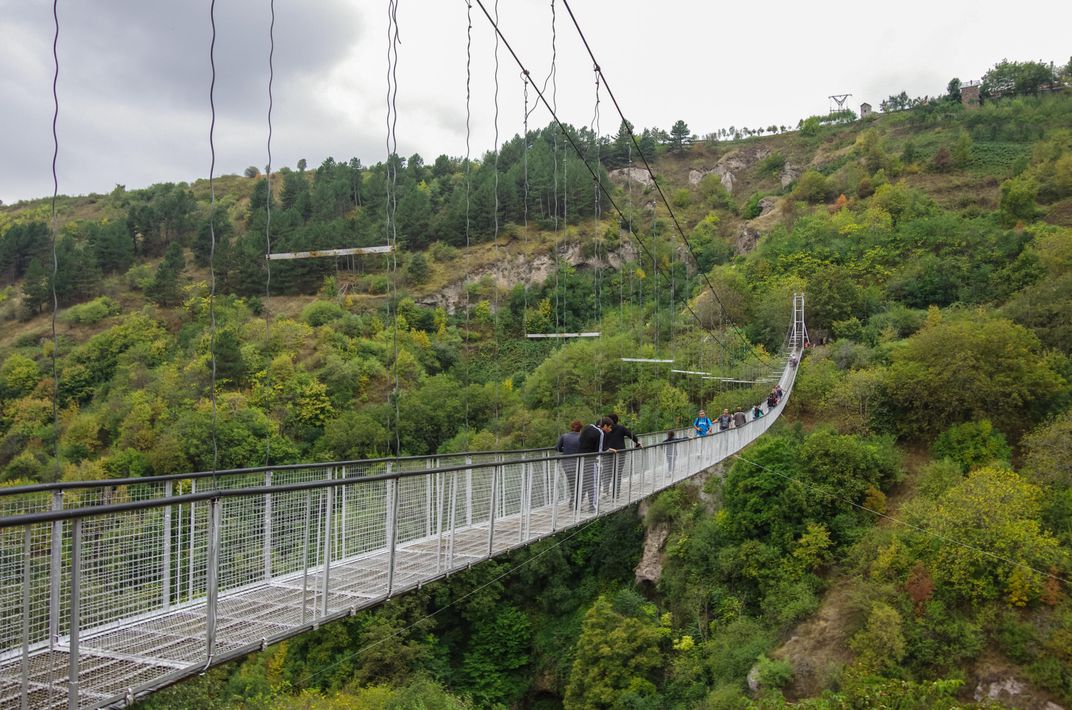
/https://tf-cmsv2-smithsonianmag-media.s3.amazonaws.com/accounts/headshot/JenniferBillock.png)